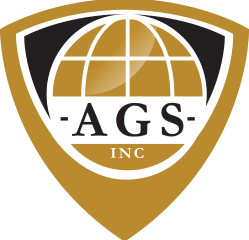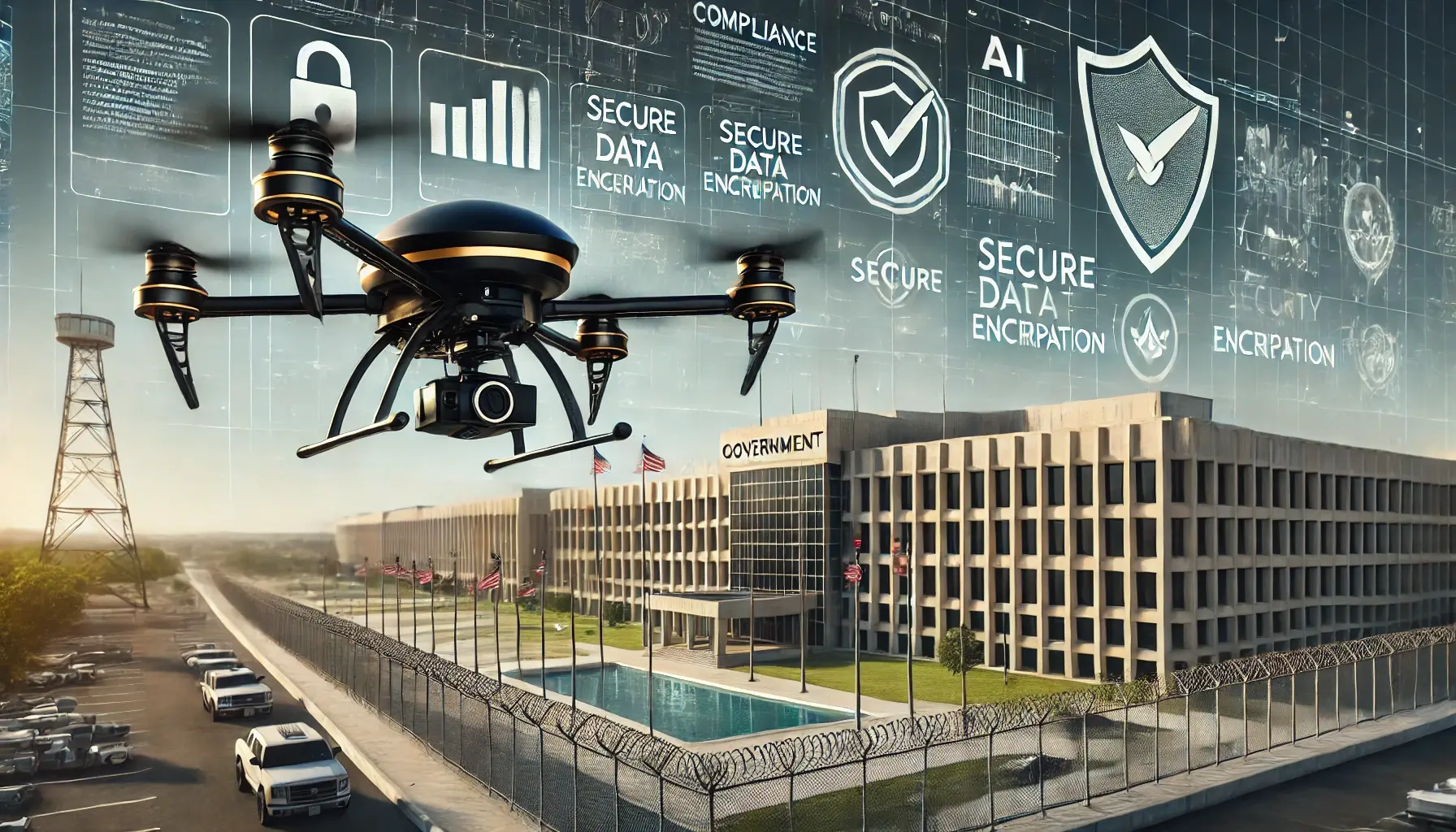Government facilities, whether municipal buildings, military bases, or sensitive research sites, operate under strict security mandates. Ensuring compliance with these regulations is critical to safeguarding sensitive information, high-value assets, and personnel. Traditional security measures often fall short in meeting complex regulatory requirements, leaving gaps in reporting, monitoring, and operational oversight. Compliance-focused drone security provides a modern solution, offering advanced surveillance, reliable reporting systems, and adherence to government standards. Here’s why compliance-focused drone security is essential for government facilities. Need help setting up aerial drone security for your government facility?
1. Meeting Federal and Local Security Mandates
The Challenge: Government facilities are required to follow strict security regulations outlined by federal and local authorities. These mandates often include detailed requirements for surveillance, data protection, and operational transparency. Non-compliance can result in significant penalties, reputational damage, or increased vulnerabilities.
How Drones Help: Compliance-focused drone systems are designed to meet these stringent requirements. Features such as geofencing, encrypted data storage, and customizable patrol routes ensure that drones operate within authorized parameters while providing the necessary oversight to satisfy regulatory standards.
Key Benefits:
-
Geofencing: Prevents drones from straying into unauthorized or residential areas.
-
Data Encryption: Protects sensitive surveillance data from breaches.
-
Regulatory Adherence: Drones can be programmed to follow specific monitoring and reporting guidelines.
Example Use Case: A government research facility implemented drones with geofencing capabilities to ensure surveillance was limited to public and restricted zones, aligning with local privacy laws.
2. Providing Detailed Reporting and Audit Trails
The Challenge: Security mandates often require detailed documentation of monitoring activities, incident responses, and system performance. Manual reporting methods can be time-consuming, prone to errors, and challenging to standardize across facilities.
How Drones Help: Drones equipped with advanced reporting systems automate the collection and storage of surveillance data. They create detailed audit trails that include time-stamped video footage, patrol logs, and incident reports, ensuring accurate and reliable documentation.
Key Benefits:
-
Automated Reporting: Reduces administrative burdens on security teams.
-
Standardized Data: Ensures consistency in reporting across multiple sites.
-
Ease of Access: Centralized systems make it simple to retrieve records for audits or reviews.
Example Use Case: A municipal building used drone-generated audit trails to streamline its annual security compliance review, reducing preparation time by 40%.
3. Enhancing Operational Security
The Challenge: Ensuring the security of high-value assets and sensitive information requires more than just compliance—it requires proactive and comprehensive surveillance to deter and respond to threats.
How Drones Help: Drones offer unparalleled operational security through continuous monitoring and advanced analytics. AI-powered systems can detect anomalies, such as unauthorized individuals or vehicles, and alert security teams in real time. Additionally, drones can be deployed instantly to investigate alarms or suspicious activity.
Key Benefits:
-
Proactive Threat Detection: Identifies and mitigates risks before they escalate.
-
Rapid Response: Drones can be deployed within seconds, providing real-time visuals.
-
Increased Deterrence: The visible presence of drones discourages unauthorized activity.
Example Use Case: A military base used drones to monitor its perimeter and restricted zones, significantly reducing unauthorized access attempts by 60% within six months.
4. Navigating Complex Regulatory Environments
The Challenge: Government facilities must navigate a web of federal, state, and local regulations, each with its own set of security requirements. Keeping up with evolving laws and ensuring compliance across multiple jurisdictions can be daunting.
How Drones Help: Compliance-focused drone systems are adaptable to various regulatory frameworks. They can be customized to meet specific requirements for each facility, ensuring consistent adherence to applicable laws.
Key Benefits:
-
Customizable Systems: Tailored to the unique needs of each facility and jurisdiction.
-
Regular Updates: Providers offer software updates to align with evolving regulations.
-
Centralized Management: Enables oversight of compliance efforts across multiple locations.
Example Use Case: A government agency with facilities in multiple states used drones with customizable monitoring protocols, ensuring compliance with both federal and local security mandates.
5. Cost-Effective Compliance Solutions
The Challenge: Implementing and maintaining compliance-focused security systems can be expensive, particularly for facilities with limited budgets.
How Drones Help: Drones reduce costs by automating surveillance and minimizing reliance on extensive personnel or infrastructure. Their scalability ensures that even smaller facilities can implement effective, compliance-focused solutions without overspending.
Key Benefits:
-
Reduced Manpower Costs: Automated patrols lower staffing requirements.
-
Efficient Resource Allocation: Focuses resources on critical areas.
-
Scalable Options: Systems can grow with the facility’s needs.
Example Use Case: A municipal government replaced its static cameras and ground patrols with drones, saving 35% in annual security expenses while enhancing compliance capabilities.
Key Features of Compliance-Focused Drone Security
| Feature | Importance |
|---|---|
| Geofencing | Ensures drones operate only within authorized zones. |
| Data Encryption | Protects sensitive surveillance information. |
| Automated Reporting | Simplifies compliance documentation. |
| AI-Powered Analytics | Detects anomalies and reduces false alarms. |
| Customizable Protocols | Adapts to specific regulatory requirements. |
| Real-Time Alerts | Enhances response times for security teams. |
Benefits of Compliance-Focused Drone Security
-
Regulatory Adherence: Ensures alignment with federal, state, and local mandates.
-
Operational Efficiency: Reduces administrative burdens with automated reporting and monitoring.
-
Proactive Security: Identifies and addresses threats in real time.
-
Cost Efficiency: Offers scalable solutions that fit within tight budgets.
-
Enhanced Transparency: Provides detailed audit trails for accountability.
Frequently Asked Questions (FAQs)
Q: Are compliance-focused drones suitable for all government facilities? A: Yes, drones can be customized to meet the unique security and regulatory needs of various government-owned properties.
Q: How do drones ensure data security? A: Features like encryption and secure storage protect surveillance data from unauthorized access or breaches.
Q: Can drones operate in complex regulatory environments? A: Yes, modern drone systems are designed to adapt to different federal, state, and local requirements, ensuring compliance across jurisdictions.
Q: What cost savings can drones provide compared to traditional methods? A: Drones reduce manpower and infrastructure costs, often saving 30-40% compared to traditional security systems.
Q: How do drones streamline compliance reporting? A: Automated reporting systems generate detailed logs, video records, and incident documentation, simplifying audits and reviews.
.png)
.png)
.png)

.png)
.png)

.png)
.png)
.png)
.png)
